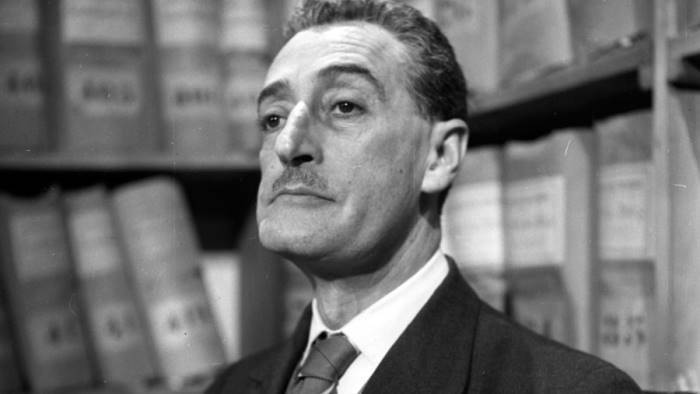
Totò: Four simple letters to identify an immense artist
On the occasion of the anniversary of the death of this unique, great artist. Movieblog has decided to pay tribute to him through a column of his most successful films. Films that more reflect his artistic self.
What was Totò for me (personal opinion)
April 15, 1967, he left us Anthony Curtisthe man behind the mask, but fortunately his art has remained, we could say the very soul of Totò, through his films but not only.
The imprint of this artist has also left its mark through poems such as A ‘levelor through songs like Malafemmina.
And true art, like gold, never loses its value over time. So it was for Totò, in the years after his death he received those awards that he, undeservedly, did not have in life. Unchanged if not increased, it was the affection that the public had for him. Personally, I immediately proposed to write this article about him, because the image of Totò has practically accompanied my existence.
I see myself as a child watching his films sitting on my father’s lap and laughing like crazy. I remember when my mother scolded my father at lunch she changed the channel to see a Toto movie instead of the usual news and she said: “But you’ve seen this film a hundred thousand times.” And he promptly replied with a joke that would have made Totò laugh: “But I’ve never seen him at this time, it’s the first time”.
See them thousands of times without ever getting tired and laughing as if we had seen them for the first time. I personally refused to see cartoons like Dragon Ball to see them. And it was his films that transmitted my passion for cinema to me.
In short, I, like many, have a real debt of gratitude towards this man who has given me so much through his art.
Totò’s cinema
One of Totò’s most trusted and closest collaborators since the magazine, the character actor Mario Castellaniin an interview stated:
“Totò was instinctive, a born improviser. The script, for him, had to represent just a trace, a starting point and that’s it. In the magazine, where I was the artistic director, he was, and rather listless, only the first few days of rehearsal, then he disappeared from circulation and it was useless to look for him. He would show up when he was about to go on stage and then in a few moments he would update himself on what he had to do. But the truth is that the best things came spontaneously to him only on stage, under the pressure of the audience. In short, that of Totò was a very special form of comedy, absolutely unique in its genre and therefore unrepeatable. Generally, he worked on the counterattack, rebounding jokes and situations that were offered to him by his “shoulder”. If the game attacked, then it was unleashed on the wave of public consensus and slipped a whole series of inventions of which there was not the slightest hint in the script. Following the renewed interest in Totò’s figure and art, I often hear myself asked for the text of this and other sketches that have now become legendary. But the lyrics aren’t there. There have never been. This is why art, the true art of Totò has disappeared with him and the young people who have not had the good fortune to see him on the stage cannot find him as it was really when watching his films. Totò is not Chaplin or Buster Keaton, typically cinematographic phenomena. Totò is the theater. Cinema, at best, has halved it. At worst, which was the norm, she purely and simply betrayed him. “
From these words it is clear that cinema has not exploited its potential to the maximum. But despite this, cinema was the means by which he was able to bestow his artistic legacy. Cinema has immortalized what Nino Manfredi defined “The last mask of the commedia dell’arte”.
A perfect definition, that’s where his comedy comes from.
What for many was a great ability to improvise, was actually the result of a long youthful apprenticeship in the last company that still drew on that comedy of noble and ancient origins called “Of Art”that of the impresario Umberto Capece.
But how much of Totò’s art was there in your films?
MovieBlog with this column he will propose the films that came closest to his idea of comedy and that have remained the most in the collective imagination.
Through a series of cycles concerning the comic evolution, the formation of the duo Totò and Peppinothe dramatic interpretations, the surreal comedy.
The three films mentioned below are those that presented the evolution of the comic character of Totò.
1st cycle: the comic evolution of Totò
The first film of this cycle is
-
The Six Wives of Bluebeard, by Carlo Ludovico Bragaglia (1950)
Plot: One night Totò had entered a room, thinking it was that of Sunday, the servant; instead it was that of Carmela, the mistress. His brother had surprised him and forced him to marry Carmela. At the wedding, however, Totò runs away. He then clandestinely embarks on a ship departing from New York and meets Amilcare Marchetti (Mario Castellani), another illegal immigrant; to avoid being discovered, they take refuge in a cabin and are mistaken for Nick Parker and his assistant Patson, two famous American investigators called to Italy to investigate Bluebeard, a serial killer.
This can be defined as the last film in which Totò refers to a typically magazine comedy, made up of jokes and puns (eg. “Are we expected? I thought we were in Naples …”) in which the ideas start only from him, the whose script is devoid of gimmicks.
In short, the typical film resting on Totò’s shoulders.
The second film is:
-
Totò sheikhdirected by Mario Mattoli (1950)
Plot : Antonio Sapone is the chief butler of the obese Marquise of San Frustone, who breaks down the chairs one after the other, especially when she suffers and cries because of the sorrows that her son, the Marquis Gastone, causes her. The marquis, desperate for having quarreled with his girlfriend, the songwriter Lulù, decides to commit suicide, immediately after asking to be killed by Antonio, and finally decides to enlist in the Foreign Legion to never see Lulu again. The marquise asks Antonio to follow him and stay close to him to prevent him from committing nonsense. Antonio accepts in exchange for a palace. Due to a series of misunderstandings, instead of enlisting in the Foreign Legion, Antonio ends up in the ranks of the rebels, who make him believe he is the son of the sheikh, arrested in Europe.
Considered the highest point of the collaboration between Totò and Mattoli, the film is inspired by the type of American comedy, contrary to the previous one there is a greater care in the script and in the direction that give rhythm to the film, to the advantage of the performance of Totò who it refers to a character with Pulcinellesque tones. In the movie Carlo Croccolo makes his first real appearance alongside Totò in the role of the tavern waiter, a role he will keep in other films alongside him, giving memorable comic duets.
And the third film I’m about to mention is the one that sees Totò in a completely new comic character.
-
47 dead speakingdirected by Carlo Ludovico Bragaglia (1950)
Plot: Baron Peletti finds himself in trouble because of his own exaggerated avarice. Determined to steal a large donation from the children of the village that would allow them to finally have a school, the man becomes the victim of an incredible joke.
In this film Totò reaches his maximum evolution of the comic character.
Here it is not the usual character taken from the magazine, it is a completely new personality you lose more negative, but inspiring sympathy and hilarity
Passed to history, the famous phrase:
“…and I pay!”
The duets in which he harasses and tyrannizes over the poor butler, played by Carlo Croccolo.
His comic vis is tinged with dark tones, impersonating the miserly Baron, he creates a bad comedian who through his evil gestures generates fun without falling into ridicule. From here on, this type of comedy will also find support in other films, especially with those alongside the great Peppino de Filippo.
In short, a real pearl of Totò’s comedy.
Source: https://www.movieblog.it/levoluzione-comica-di-toto-in-3-film/?utm_source=rss&utm_medium=rss&utm_campaign=levoluzione-comica-di-toto-in-3-film


